Showing Spotlights 97 - 104 of 556 in category All (newest first):
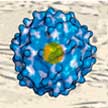 With their ability to resist conventional chemotherapy drugs, cancer stem cells (CSC) are really difficult to kill, and they are considered to be key drivers in metastasis, the spread of cancer via the blood stream. If the frequency of CSCs could be diminished, tumors would be rendered less aggressive and more responsive to conventional therapy. This approach is known as differentiation therapy and has considerable therapeutic potential. Scientists now report an approach capable of efficient differentiation of CSCs into non-CSC phenotypes.
With their ability to resist conventional chemotherapy drugs, cancer stem cells (CSC) are really difficult to kill, and they are considered to be key drivers in metastasis, the spread of cancer via the blood stream. If the frequency of CSCs could be diminished, tumors would be rendered less aggressive and more responsive to conventional therapy. This approach is known as differentiation therapy and has considerable therapeutic potential. Scientists now report an approach capable of efficient differentiation of CSCs into non-CSC phenotypes.
Nov 10th, 2020
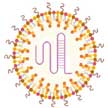 With over 200 COVID-19 vaccine trials currently underway globally, nanotechnology is being pivoted for COVID-19 applications. Nanoparticles and viruses operate on the same scale, and thus there are various nanotechnological aides which are being used in the development of potential vaccines. Nanoparticles are capable of entering the cell through biological channels, and can deliver antigens there. Besides delivering antigens themselves, nanoparticles can also be enlisted to provide adjuvants to cells.
With over 200 COVID-19 vaccine trials currently underway globally, nanotechnology is being pivoted for COVID-19 applications. Nanoparticles and viruses operate on the same scale, and thus there are various nanotechnological aides which are being used in the development of potential vaccines. Nanoparticles are capable of entering the cell through biological channels, and can deliver antigens there. Besides delivering antigens themselves, nanoparticles can also be enlisted to provide adjuvants to cells.
Nov 9th, 2020
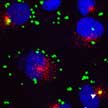 Nucleic acids offer an ideal building material for the development of therapeutic nucleic acids because they are biocompatible and can be programmed as or functionalized with antisense oligonucleotides, small interfering RNA (siRNAs), microRNAs (miRNAs), aptamers, and decoy sequence. New research shows that nucleic acid composition can be designed for enhanced stability, targeted cellular delivery, and optimal activation or abrogation of immune responses.
Nucleic acids offer an ideal building material for the development of therapeutic nucleic acids because they are biocompatible and can be programmed as or functionalized with antisense oligonucleotides, small interfering RNA (siRNAs), microRNAs (miRNAs), aptamers, and decoy sequence. New research shows that nucleic acid composition can be designed for enhanced stability, targeted cellular delivery, and optimal activation or abrogation of immune responses.
Oct 28th, 2020
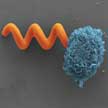 The immune system's activation of macrophages, a type of immune cells that are on the lookout for pathogens, is a major obstacle for developing functional medical microrobots that can operate in vivo for a prolonged period of time. Researchers are trying to overcome this challenge by 'camouflaging' therapeutic nanoparticles with special coatings so that they avoid detection by macrophages. In new work, researchers report the development of stealth microrobots that can fly under the radar of the immune system, and hence prolong their window of operation since they do not get eliminated.
The immune system's activation of macrophages, a type of immune cells that are on the lookout for pathogens, is a major obstacle for developing functional medical microrobots that can operate in vivo for a prolonged period of time. Researchers are trying to overcome this challenge by 'camouflaging' therapeutic nanoparticles with special coatings so that they avoid detection by macrophages. In new work, researchers report the development of stealth microrobots that can fly under the radar of the immune system, and hence prolong their window of operation since they do not get eliminated.
Oct 26th, 2020
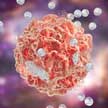 The use of graphene-based materials in pharmaceutical nanotechnology has recently received more attention due to their unique chemical structure and physicochemical properties - including an ultra-high surface area, optical, thermal and electrical conductivities, and a good biocompatibility. They can also load large amounts of drug molecules on both sides of the single atom layer sheet. The next generation of cancer nanotheranostics employing graphene-based nanomaterials could address the many challenges associated with traditional chemotherapeutic agents, such as the issues surrounding poor solubility, harmful side effects, non-specific drug distribution, and multi-drug resistance.
The use of graphene-based materials in pharmaceutical nanotechnology has recently received more attention due to their unique chemical structure and physicochemical properties - including an ultra-high surface area, optical, thermal and electrical conductivities, and a good biocompatibility. They can also load large amounts of drug molecules on both sides of the single atom layer sheet. The next generation of cancer nanotheranostics employing graphene-based nanomaterials could address the many challenges associated with traditional chemotherapeutic agents, such as the issues surrounding poor solubility, harmful side effects, non-specific drug distribution, and multi-drug resistance.
Oct 9th, 2020
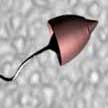 Researchers have developed a hybrid sperm micromotor, which can carry a payload and efficiently and controllably swim against flowing blood. Sperm-based micromotors hold several advantages, in particular their powerful propulsion generated by the beating of the sperm flagella. Sperm are also able to swim for several days with a drag force up to 100 pN. The most important feature of sperm micromotors to operate in the bloodstream is their ability to swim against flow as well as close to boundaries, where the blood velocity is lower than the average velocity, due to shear stress.
Researchers have developed a hybrid sperm micromotor, which can carry a payload and efficiently and controllably swim against flowing blood. Sperm-based micromotors hold several advantages, in particular their powerful propulsion generated by the beating of the sperm flagella. Sperm are also able to swim for several days with a drag force up to 100 pN. The most important feature of sperm micromotors to operate in the bloodstream is their ability to swim against flow as well as close to boundaries, where the blood velocity is lower than the average velocity, due to shear stress.
Oct 8th, 2020
 Researchers have demonstrated the creation of a living micromotor with multifunctional capability. The distinctive feature of this device is that it doesn't require synthetic materials and therefore avoid the problems of energy consumption and waste production generated during material synthesis. Using microalgal Chlamydomonas reinhardtii cells as the sole material, the scientists made living and multifunctional micromotors controlled by optical force. This system might be particularly useful for indirect manipulation and controllable disruption of biological targets.
Researchers have demonstrated the creation of a living micromotor with multifunctional capability. The distinctive feature of this device is that it doesn't require synthetic materials and therefore avoid the problems of energy consumption and waste production generated during material synthesis. Using microalgal Chlamydomonas reinhardtii cells as the sole material, the scientists made living and multifunctional micromotors controlled by optical force. This system might be particularly useful for indirect manipulation and controllable disruption of biological targets.
Sep 23rd, 2020
 Imagine catching a comet. Now imagine the comet is as small as a few billionths of meters and it is made of elements from the periodic table that do not like each other; whose fate is that of separate in space and dissolve in biological environments or just in air. Before this happens, the elements are trapped in what is called a non-equilibrium alloy nanoparticle. Since this nanoalloy changes over time, it is not enough to provide its composition and size at a given time, but one should know also how it will change in the near future, or how it changed in the near past.
Imagine catching a comet. Now imagine the comet is as small as a few billionths of meters and it is made of elements from the periodic table that do not like each other; whose fate is that of separate in space and dissolve in biological environments or just in air. Before this happens, the elements are trapped in what is called a non-equilibrium alloy nanoparticle. Since this nanoalloy changes over time, it is not enough to provide its composition and size at a given time, but one should know also how it will change in the near future, or how it changed in the near past.
Sep 21st, 2020
 With their ability to resist conventional chemotherapy drugs, cancer stem cells (CSC) are really difficult to kill, and they are considered to be key drivers in metastasis, the spread of cancer via the blood stream. If the frequency of CSCs could be diminished, tumors would be rendered less aggressive and more responsive to conventional therapy. This approach is known as differentiation therapy and has considerable therapeutic potential. Scientists now report an approach capable of efficient differentiation of CSCs into non-CSC phenotypes.
With their ability to resist conventional chemotherapy drugs, cancer stem cells (CSC) are really difficult to kill, and they are considered to be key drivers in metastasis, the spread of cancer via the blood stream. If the frequency of CSCs could be diminished, tumors would be rendered less aggressive and more responsive to conventional therapy. This approach is known as differentiation therapy and has considerable therapeutic potential. Scientists now report an approach capable of efficient differentiation of CSCs into non-CSC phenotypes.
 Subscribe to our Nanotechnology Spotlight feed
Subscribe to our Nanotechnology Spotlight feed





